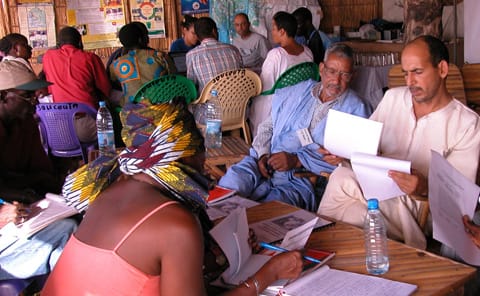
Reflect
Self-strengthening processes may be prompted by the need to address a pressing concern for your territory or to take up a new opportunity. In all cases, a useful starting point is holding a grassroots discussion to explore and confirm:
- whether your community is a custodian of a territory of life;
- what the status of that territory of life is; and
- whether and how your community wants to embark on a self-strengthening process.
‘Territories of life’ are very diverse… but ‘well-defined’ territories of life share three common characteristics:
- there is a close and deep connection between a territory and a custodian indigenous people or local community;
- the custodian people or community is able to make and enforce decisions and rules (e.g., regarding access and use) about the territory… i.e., there is functioning governance institution; and
- the governance decisions and management efforts of the concerned custodian people or community contribute to both conserving nature in the territory and ensuring community livelihoods and wellbeing.
It is helpful to understand the ‘status’ of any existing or potential territory of life, i.e., whether it is:
- defined: the territory currently has all three characteristics, i.e., a deep community-territory connection, well-functioning community governance, and effective conservation and livelihoods/ wellbeing results;
- disrupted: the territory previously had all three characteristics, but currently some are not fully present because of disturbances that the custodian community believes can be reversed or counteracted; or
- desired: the territory never possessed all three characteristics, but has the potential to develop them, according to a community that is willing to become its custodian.
Regardless of the status of the territory of life, a self-strengthening process may help the custodian community to better understand it and care for it. The community defines and leads the self-strengthening process. This takes commitment and a (flexible) plan.
Note: For this online guidance, ‘community’ is a general term used to refer to the self-identified custodian of a given territory of life. The term thus stands for Indigenous peoples, local or mobile communities, multiple communities working together, or other groups, as appropriate.
Header Photo: © Grazia Borrini-Feyerabend